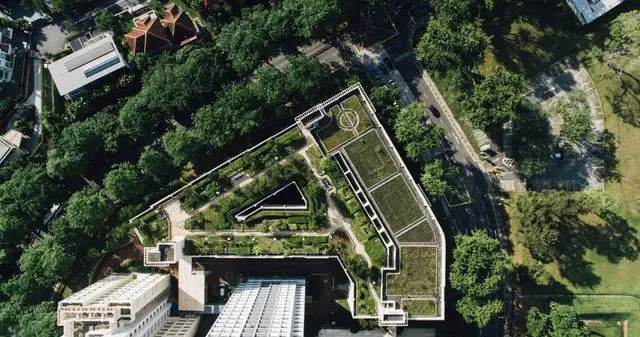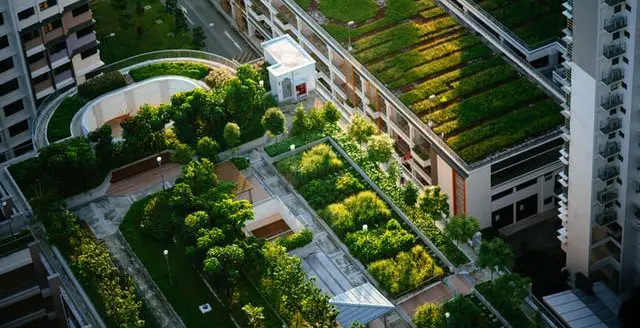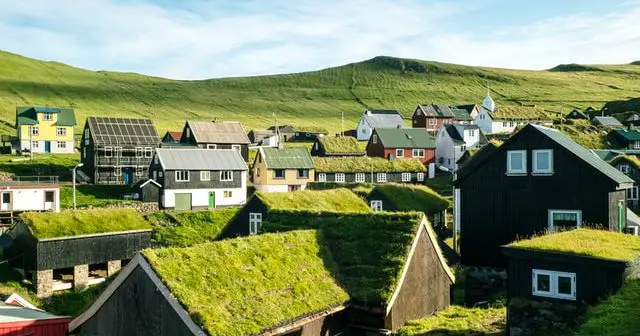Green roof technology is becoming more common because of peoples’ enhanced awareness about climate change. Carbon emissions have hit all-time highs, and business owners want to reduce their carbon footprint. A popular way to achieve the objective is to create green space on the roofs of commercial buildings.
What is a Green Roof?
A green roof is a roof with plants growing on it. A large, flat roof is ideal for growing a green roof. It can serve as a garden, park, research center, etc. The design of a green roof is complex because it has many systems layered atop each other. It augments an existing roof by adding high-quality waterproofing, a root repelling system, high capacity drainage, a lightweight growing medium, filter cloth, and plants.
The green roof is an ancient concept brought into the present by incorporating modern technology. Centuries ago, people equipped their houses with green sod roofs. They grew grass and other plants to help keep buildings cool during summer and warm during winter.

Types of Green Roofs
Green roofs exist in two forms: intensive (modular) and extensive (traditional).
Intensive Green Roof
They are ideal for commercial properties where the owner wants a park-like ambience where people can relax, dine, and work. Since intensive green roofs need to support bigger plants, the planting medium should be at least eight inches thick.
Intensive green roofs are as close as you can get to a traditional garden because of their thick growth medium. You can garden on them, add entertainment areas, and allow people to walk on them.
Since intensive green roofs hold heavier plants and deep growing media, they can add significant weight to a building. People who want to install intensive green roofs should tell their structural engineers to give the building strength.
Extensive Green Roof
The other names for this type of roof are traditional, loose-laid, continuous, or wall-to-wall. This type of roof is usually not modular. It contains a planting medium that ranges between 4 and 6 inches thick. Extensive green roofs support minimal plant variety. People usually plant drought-resistant grasses and small plants on them.
Most extensive green roofs are self-sustaining and need minimal irrigation and maintenance.
Benefits of Green Roofs for Commercial Buildings
The growth of cities such as Vancouver and Toronto has created new challenges that need innovative solutions. Green roofs have many benefits that help the environment and the owners of commercial buildings. The following are the main advantages.
Improved Storm Water Management
Rapid urbanization has driven people to replace the natural ground cover with asphalt and concrete. These artificial structures prevent rainwater from being absorbed into the ground and increase wet weather flows. Rain can cause flash flooding that reduces water quality by causing sewers to overflow.
Cities have been grappling with wet weather flows for decades and have commissioned various research projects to find solutions. Green roofs have emerged as one of the best ways to address the problem in high-density developments such as cities. A green roof can be an on-site stormwater management feature.
Green roofs reduce the rainwater runoff rate by up to 65%. They extend the time rainwater leaves a building by up to three hours. An extensive green roof can trap the initial 1⁄2 to 3⁄4 inch of rainwater.
One building with a green roof cannot do much to the runoff of a city. However, with more buildings, the load on the city’s sewer systems reduces when it rains.
Green Roofs Improve The Biodiversity of the Area
One of the first elements of nature to be affected by urban developments is biodiversity. An area with high biodiversity has many different species with enough individuals to maintain the population.
Green roofs help provide new habitats for plant and animal species that declined because of construction. Well-implemented green roofs can support many plant and animal species whose habitats were decreased by construction. The main animal species that benefit from green roofs are birds and invertebrates. The amount of biodiversity a green roof supports depends on the type of vegetation selected. Deep growing mediums are also beneficial for invertebrate species.
Green Roofs Reduce the Urban Heat Island Effect
When the temperature of a city is higher than the surrounding suburbs, it has the Urban Heat Islands (UHI) effect. The problem occurs due to reduced natural features that absorb heat from the sun and turn it into water vapor, subsequently cooling the surrounding air.
Built-up areas absorb solar energy and radiate it back into the atmosphere as heat. A green roof reduces the heat island effect by cooling the building and its surroundings due to transpiration.
A Green Roof Reduces a Building’s Energy Consumption
A green roof reduces the heating effect of solar radiation during summer and insulates the building from heat loss during winter.
The amount of energy saved depends on the building’s location. Buildings in a city like Winnipeg benefit more from green roofs during winter because of how low the winter temperatures can get. On the other hand, commercial buildings in Victoria, British Columbia, benefit from lower energy consumption for cooling.
A green roof moderates temperature above a building’s roof and can help improve the efficiency of rooftop HVAC units.
It is worth mentioning that energy savings during winter are lower than in the summertime.
Rooftop Agriculture
Green roofs are ideal locations for urban agriculture. Building owners can take advantage of the large, flat areas that receive steady sunlight throughout the day.
Rooftop gardens reduce the distance from the food production area to consumers and reduce carbon emissions from agriculture.
The food consumed by city dwellers comes from far away. The carbon footprint of feeding them is significant, but you can reduce it if many building owners adopt green roof agriculture.
Sound Blocking
If a building has insufficient ceiling insulation, it can suffer from external noise in the upper levels. Areas with heavy air or motor traffic are the worst affected.
Green roofs can offer acoustic benefits in places like Toronto, where more than 60% of residents experience noise levels exceeding 55 dBA during the day. On weekends, the noise can exceed 60 dBA – the same as an average conversation but one that doesn’t end.
Aesthetics
A green roof can provide tenants of a building with an attractive space where they can unwind. Additionally, a green roof offers a secure recreational area for the building’s occupants.
Green Roofs Increase the Longevity of Roofs
When installed well, a green roof doubles the years between roof replacement. Conventional roofs have a life expectancy of seventeen years, but green roofs can last up to forty years.

Drawbacks of Green Roofs
Despite having numerous benefits, green roofs have several setbacks, including
Installation cost
The main drawback of a green roof is its cost. Some building owners are unable to acquire sufficient capital for this installation.
Complex Repairs
The lower layers of green roofs are hard to access. Specialized skills are needed to repair the roof.
You Cannot Install a Green Roof on any Building.
A property needs several characteristics to be suitable for green roof installation. Narrow buildings or those with steep roofs are not ideal for green roofs.
How Green Roofs Contribute to Sustainability Efforts
Green roofs support sustainability efforts by reducing the energy footprint of commercial buildings.
Secondly, they improve the air quality of cities by filtering particulate matter, producing oxygen, and improving temperature.
Green roofs also reduce the number of roofing materials ending up in landfills because they increase the durability of roofs.
Green roofs also provide a lifeline to wildlife displaced by construction.

Type of Application Systems for Commercial Green Roofs
When building a green roof, the final step is to choose an application system. The application system is the way you introduce plants to your green roof. The following are the application systems you can use.
Vegetated Matts
In this method, you grow plants on the ground. After they reach the transplanting stage, you cut them into matts and lay them on the roof.
Pre-Planted Trays
If you have a loose substrate that you cannot roll into matts, you can place it in trays and plant on it. The ideal trays should have mounting brackets for fastening on the roof.
Plug Installation
Plugs are semi-mature stand-alone plants that you put directly on the growing medium when spreading it onto the roof. You can install mosses or sedum in the form of cuttings.
Naturalized Green Roof
A naturalized roof starts with a bare growing medium. Instead of adding plants, you wait for the area’s natural plants to colonize it. A naturalized green roof might go sideways because you might end up with only weeds. To mitigate the risk of getting unwanted plants, you could seed your desired plants directly on the roof instead of waiting for nature.
Conclusion
The green roof is becoming a common feature of modern commercial buildings. It solves many problems that building owners face. Furthermore, none of its downsides is a total deal-breaker.
As more buildings start to adopt green roof technology, they might lead to entire cities turning into sustainable spaces. These roofs might mitigate the ill effects of city construction on the environment.
If you want to learn more about sustainable real estate, smart cities, smart buildings, and PropTech, feel free to take a look at our other blog articles.

